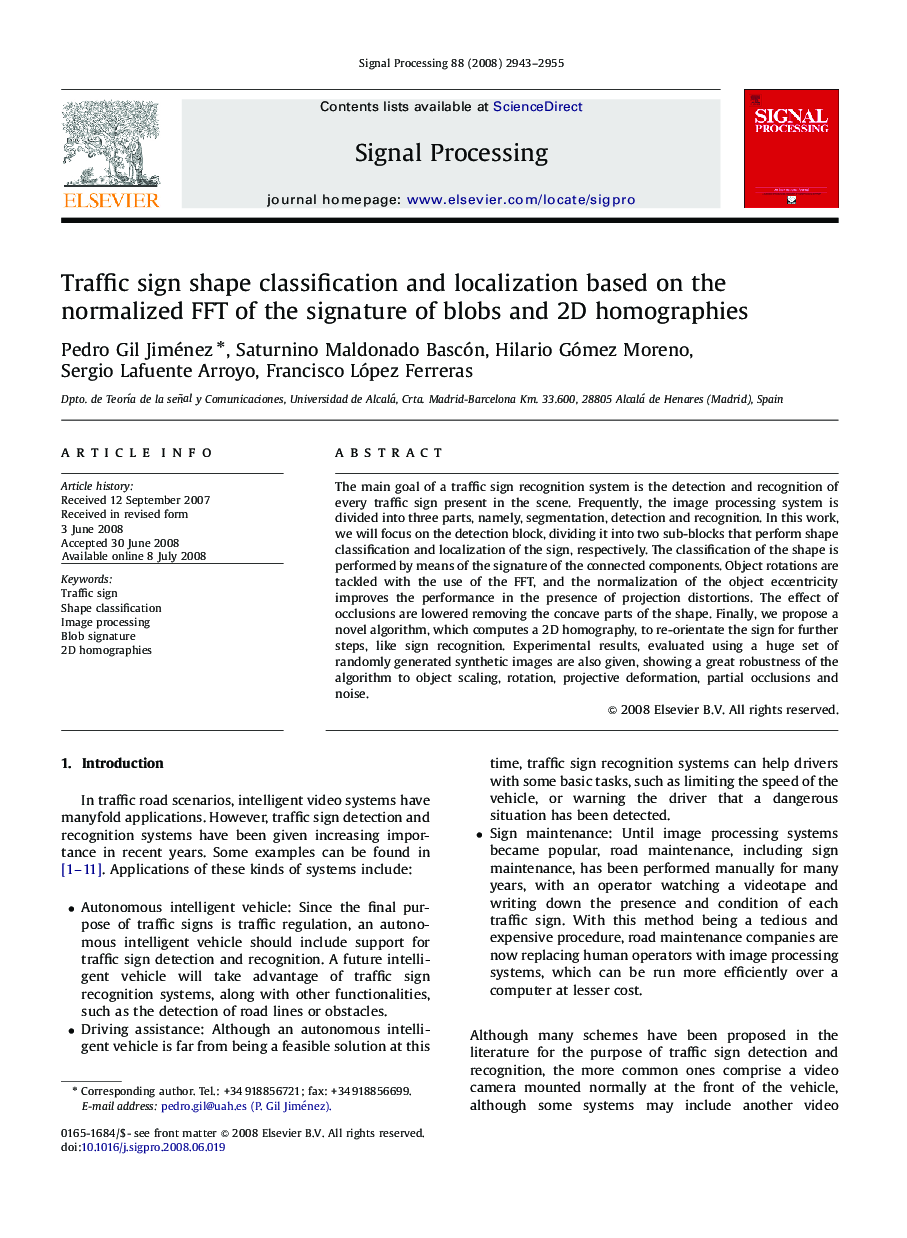| Article ID | Journal | Published Year | Pages | File Type |
|---|---|---|---|---|
| 563954 | Signal Processing | 2008 | 13 Pages |
The main goal of a traffic sign recognition system is the detection and recognition of every traffic sign present in the scene. Frequently, the image processing system is divided into three parts, namely, segmentation, detection and recognition. In this work, we will focus on the detection block, dividing it into two sub-blocks that perform shape classification and localization of the sign, respectively. The classification of the shape is performed by means of the signature of the connected components. Object rotations are tackled with the use of the FFT, and the normalization of the object eccentricity improves the performance in the presence of projection distortions. The effect of occlusions are lowered removing the concave parts of the shape. Finally, we propose a novel algorithm, which computes a 2D homography, to re-orientate the sign for further steps, like sign recognition. Experimental results, evaluated using a huge set of randomly generated synthetic images are also given, showing a great robustness of the algorithm to object scaling, rotation, projective deformation, partial occlusions and noise.
